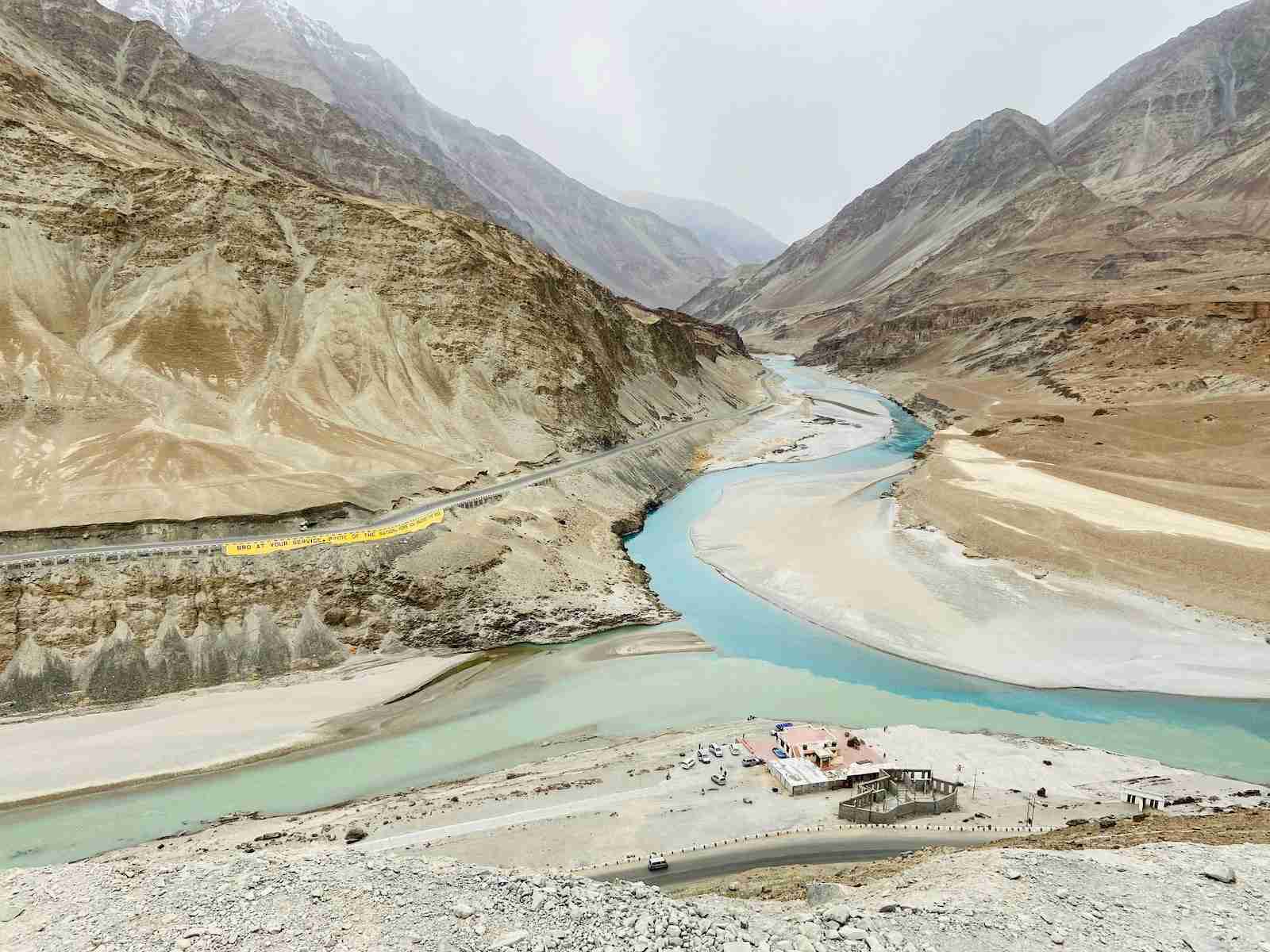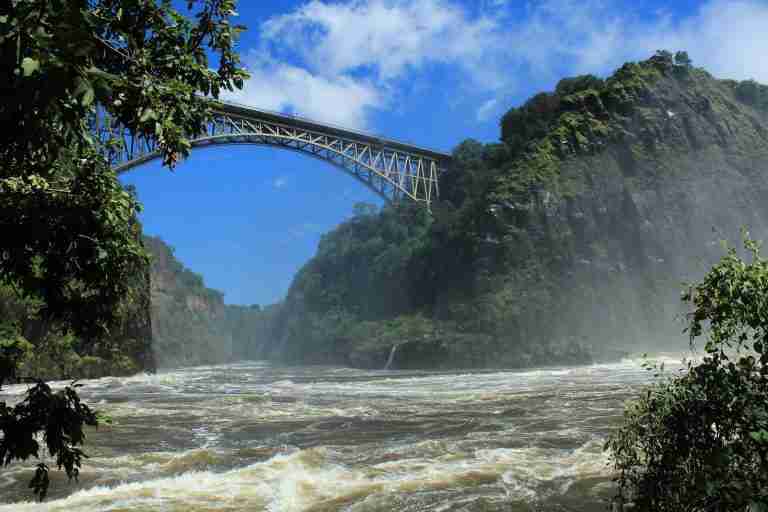22 Facts About The Indus River Unveiled
1. The Indus River is one of the longest rivers in Asia, stretching over 3,180 miles.
At over 3,180 miles long, the Indus River is a formidable force in Asia. It starts in the Tibetan Plateau and makes its way across the continent, passing through China, India, and Pakistan before emptying into the Arabian Sea.
This seemingly never-ending river gives rise to some of Asia’s most sacred sites and lush jungles.
2. The Indus River is Pakistan’s national river.
The Indus River has long served as a vital resource for the people of Pakistan. As the National River and largest river by volume in the country, it is often referred to as the Sindh River.
Extending an impressive 1,800 miles to connect with other rivers on the Subcontinent and providing 3 million square kilometers with groundwater, this raging wonder contributes to around 50 million Pakistani lives each day.
3. The Indus River starts in Tibet and flows through Pakistan and Jammu and Kashmir to the Arabian Sea.
The Indus River begins its journey in Tibet, winding through Pakistan and the regions of Jammu and Kashmir, as well as parts of western Tibet, before it reaches its destination in the Arabian Sea.
This extensive path allows it to play a pivotal role in the ecosystems and communities along its banks, serving as a lifeline that supports both the natural environment and the needs of millions of people.
4. The Indus River gets water from big rivers like the Kabul, Sutlej, Jhelum, and Chenab.
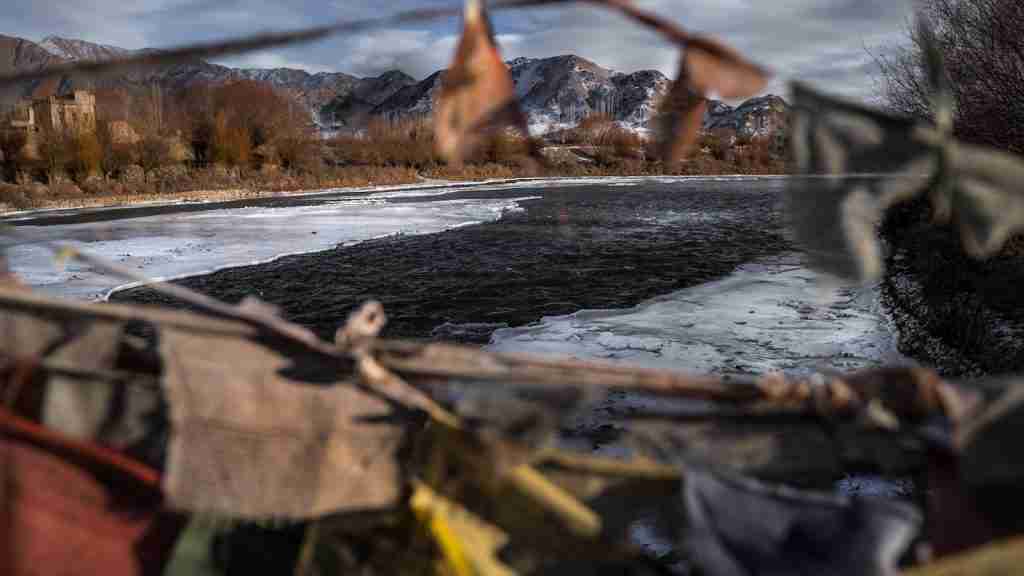
Indus River.
The Indus River’s many tributaries provide a wealth of fresh flowing water. The Kabul River, the Jhelum River, and the Chenab River are among the river’s most impressive contributors.
Coasters of these mighty rivers all come together to form one powerful main artery of life: the Indus. With such considerable assistance from its many vistas, it’s no wonder why this legendary river continues to stand strong after thousands of years.
5. Snow and glacier melt from the Karakoram, Hindu Kush, and the Himalayas contribute to the river’s flow.
The melting of snow and glaciers in the Karakoram, Hindu Kush, and Himalayan mountain ranges, combined with the heavy rains brought by the monsoon season, plays a crucial role in feeding the river.
This natural process ensures a steady flow of water throughout the year, supporting the river’s ecosystem and the communities that rely on it for their water needs.
6. The Indus River is an Important Water Source for the Indus Valley Civilization.
The Indus River is one of our history’s most important river systems. Its waters provided sustenance for over two millennia and played a vital role in supporting the life of the ancient Indus Valley Civilization.
Beginning around 3300 BCE, communities flourished along its banks until eventually declining, perhaps around 1300 BCE. The countryside surrounding this once-flourishing river was elaborately developed, including sophisticated public infrastructure and planned cities that mirrored today’s past.
7. The Indus River has been an Important Source of Irrigation for Agriculture in Pakistan.
The Indus River has been revered for thousands of years by those living along its banks, much like the Mississippi River. This river is essential for sustaining crops such as wheat, rice, cotton, and sugarcane, which fuels both local and international trade.
The river stretches over 3000 km and its waters have been crucial for agriculture. For ages, skilled people of the Indus Valley have utilized canals and advanced storage methods to harness the river’s power for irrigation, nourishing generations in Pakistan with its vital flow
8. The Indus River has diverse fish species, including the rare Indus River dolphin.
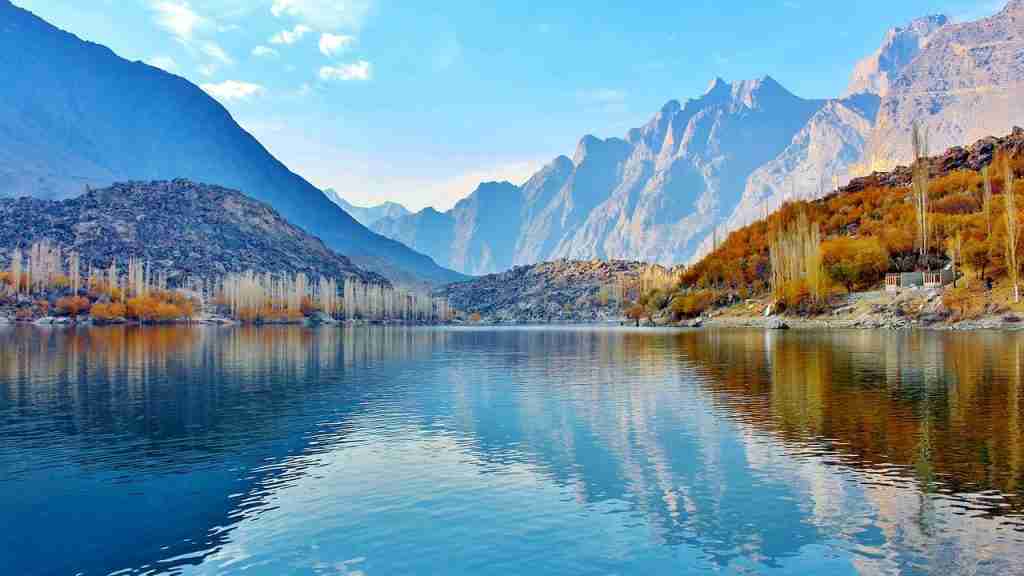
variety of fish species.
The Indus River is home to diverse fish species and the only habitat of the endangered Indus River dolphin. Found mainly in Pakistan and India, their numbers have dwindled due to habitat fragmentation, pollution, and hunting.
With only 1,816 left, conservation efforts are crucial for their survival, highlighting the river’s ecological significance and urgent need for environmental stewardship.
9. The name India is believed to be derived from the Indus River.
The name India has its roots in the Indus River, which was known as Sindhu in the ancient Rigveda texts. The Greeks referred to the river as Indos from the 5th century BCE, reflecting its importance in early geographical and cultural interactions.
The English language adopted the name in its Old English form in the 9th century, and India became widely used in modern times during the 17th century.
10. The Indus River flows more water annually than the Nile, Tigris, and Euphrates combined.
Each year, the Indus River channels an impressive volume of water, approximately 58 cubic miles (243 cubic kilometers), through its course. This remarkable flow rate not only exceeds the combined contributions of the Nile, Tigris, and Euphrates rivers.
But also underscores the Indus’s critical importance in supporting agriculture, sustaining livelihoods, and maintaining natural habitats across its vast basin.
11. The Indus River has several national parks and wildlife reserves.
The Indus River is home to several national parks and wildlife reserves, showcasing the region’s commitment to conservation and biodiversity.
Notable among these are the Khunjerab National Park, renowned for its high-altitude landscapes and unique wildlife, and the Lal Suhanra National Park in Pakistan, which offers a sanctuary for a diverse range of species
12. The Indus River existed even before the formation of the Himalayas.
The Indus River precedes the Himalayas. Its ancient course through deep gorges confirms its age is older than the mountains themselves. It’s essential to the Himalayan river systems, alongside the Ganga and Brahmaputra, and has influenced the region’s geography and culture since before the Himalayas existed.
Originating from the Tibetan plateau near Mansarovar Lake, the Indus has been a cradle of civilization, thriving around its banks, underscoring its timeless significance to the subcontinent.
13. The Indus River area is home to threatened animals like the Asian Elephant and the Snow Leopard.
The majestic Indus River provides a home to several threatened and endangered wildlife species, including the Snow Leopard and the Asian Elephant.
Both animals face persistent threats to their existence, with drastic habitat loss being one of the key causes. As such, it is our responsibility to protect this river so these creatures can persevere in their original environments.
14. The Indus River provides fresh water for millions of people in Pakistan.
The Indus River is a crucial source of fresh water for millions of people in Pakistan, playing a key role in meeting their daily water needs. Beyond quenching thirst, it underpins agriculture, irrigating a significant portion of the arable land in both India and Pakistan.
In fact, it facilitates the irrigation of one-fifth of the crop production areas in these countries. This immense contribution not only sustains local agriculture but also supports the livelihoods of countless communities dependent on farming.
15. The Indus River is home to a number of rare and threatened plant species.
The majestic Indus River is an important waterway teeming with wildlife and plant life in the depths of South Asia. It serves as a habitat for some of the planet’s rarest and most threatened species, including the unique Indus River poplar tree, which has reached out-of-reach levels of endangerment.
This beautiful tree spears through the stiller regions in search of moisture that is desperately needed to sustain itself; therefore, it can only be found in scant areas not too far inland near the river and its behind tributaries throughout the scattered lands nearby rivers.
16. The Indus River is a key migration path for birds like the Siberian crane and the Bar-Headed Goose.
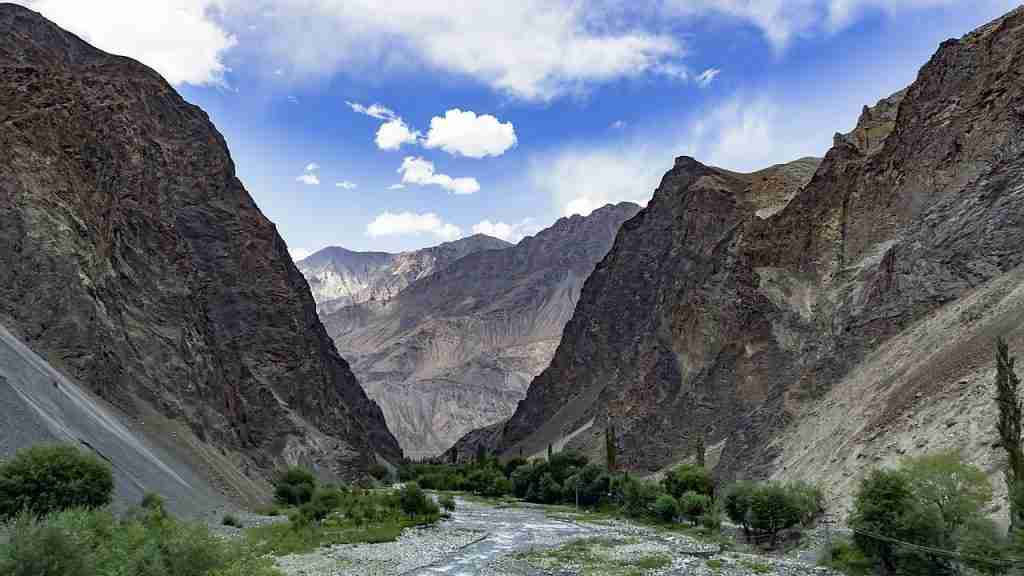
The Indus River is an essential migratory thoroughfare. Each year, many bird species make the route part of their annual journey, including the beloved Siberian crane and the exotically hued Bar-Headed Goose.
It’s a spectacular sight to see these majestic creatures pass through this legendary riverside landscape and a notable wildlife phenomenon that’s an awe-inspiring reminder of the importance of nature conservation.
17. The Indus River is home to a number of ancient cultural and religious sites.
The Indus River, with its rich history, cradles numerous ancient cultural and religious sites that trace back to various civilizations. Among these, the Mohenjo-Daro and Harappa sites stand out, remnants of the Indus Valley Civilization, showcasing sophisticated urban planning and architecture.
Additionally, the river’s banks are dotted with sacred sites revered in Hinduism and Buddhism, including the ancient pilgrimage site of Hinglaj Mata in Pakistan.
18. Mohenjo-Daro, or Mound of the Dead, was a big city of the Indus Valley Civilization.
Mohenjo-Daro, meaning ‘Mound of the Dead’ in ancient languages, was a key city of the Indus Valley Civilization. Situated near modern-day Pakistan and along the banks of the mighty Indus River, Mohenjo-Daro was an intricate center in its heyday.
Buried deep within centuries of distant history and now rediscovered by archaeology, this intimidating fortification provided seemingly comfortable housing that has withstood the test of time since its early Neolithic beginnings 4 millennia ago.
19. The Indus River passes through the Karakoram mountains.
The Indus River is one of the major rivers of South Asia, meandering through and often forming part of the borders between India, Afghanistan, and Pakistan. Notably, it flows through the mighty Karakoram mountain range.
This impressive mountain range hosts several peaks that reach an incredible 8,000 meters (26,247 feet) or higher in elevation. Indeed, the Karakoram is home to the highest concentration of such lofty Summits on Earth.
20. The Indus River is believed to have been Named after the Ancient Hindu God Sindhu.
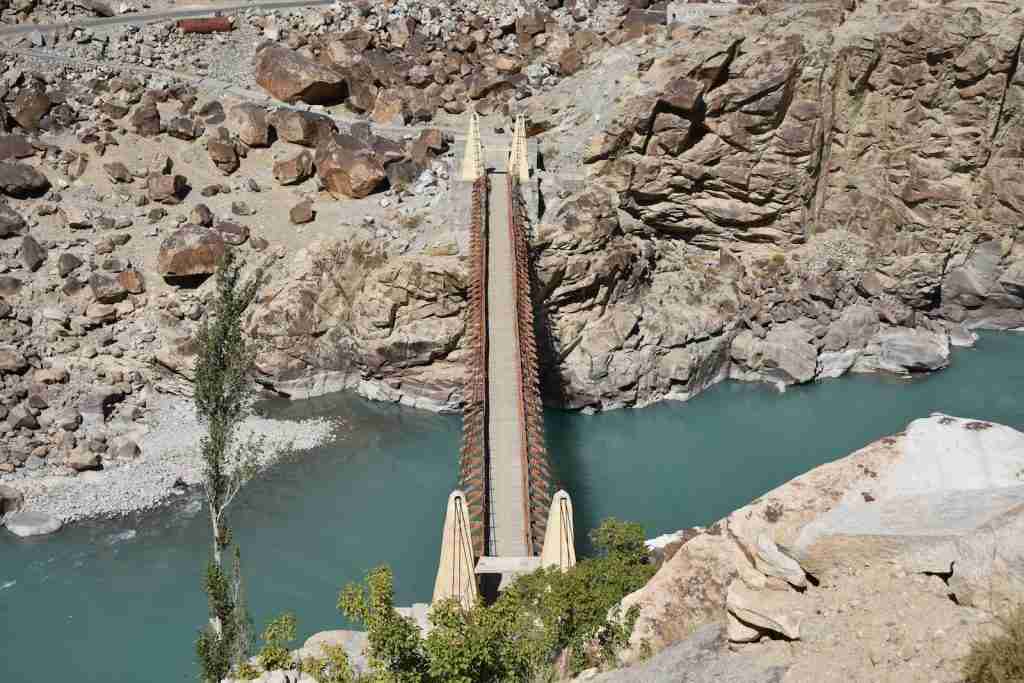
The Indus River gets its name from the Sanskrit word Sindhu, which the ancient Indo-European-speaking people of India have known since 1500 BCE, as mentioned in the Rigveda.
The name of the river has evolved over time and was taken into Greek as Indos by Herodotus in the 5th century BCE. Later, in the 9th century, it was adopted into Old English and eventually became known as India in Modern English; by the 17th century
21. The Indus River Delta is the Fifth Largest Delta in the world.
Straddling the border of India and Pakistan, the Indus River has created a flourishing delta. Ranking as the fifth largest of its kind in the world, this 16,000-square-kilometer (6,178 square miles) area is a marvel of engineering and natural beauty.
It is a vital resource for the communities living along its banks, providing them with water for drinking, agriculture, and industry.
22. The Indus River Valley Civilization, spanning from 3300-1300 BCE.
The Indus River Valley Civilization existed from 3300-1300 BCE across modern-day Afghanistan, Pakistan, and northwest India. It achieved significant advancements like standardized weights, seal carving, and advanced metallurgy.
This civilization was known for its urban planning, baked brick houses, and elaborate drainage systems. It was one of the earliest urban cultures in the world.
Despite its achievements, little is known about its script and governance, which led to its decline around 1800 BCE, possibly due to climate change and migration.
FAQS
The Indus River, Pakistan’s longest and national river, is vital for the country’s economy, culture, and society. It sustains diverse flora and fauna from the Tibetan Plateau and flows through India into Pakistan. Crucial for irrigation, hydroelectric power, and drinking water, it is a key transportation route and a hub for environmental research and eco-tourism.
1: The Indus River is home to a number of endangered species, including the Indus dolphin, the Indus crocodile, and the Indus River turtle.
2: The Indus River is the site of one of the oldest civilizations in the world, the Indus Valley Civilization, which flourished in what is now Pakistan and northwest India around 2500 BC.
3: The Indus River is home to a number of endangered species, including the Indus dolphin, the Indus crocodile, and the Indus River turtle.
The Indus River, originating in China’s Tibetan Plateau, flows through India and Pakistan, ending in the Arabian Sea. A key dispute between India and Pakistan over its use led to the 1960 Indus Waters Treaty. This treaty allocates the river’s western tributaries (Indus, Jhelum, Chenab) mainly to Pakistan and the eastern ones (Sutlej, Beas, Ravi) to India for irrigation and power generation. The Indus Waters Commission oversees this treaty, but disputes still arise between the two nations.
The Indus River, at about 3,180 kilometers (1,980 miles) long, is one of Asia’s longest rivers but not the world’s longest. That title covers the Nile in Africa, stretching about 6,853 kilometers (4,258 miles). The Amazon is the widest river in South America, reaching up to 11 kilometers (7 miles) in width. Despite not being the biggest, the Indus is crucial for agriculture, industry, and transportation in Asia and hosts diverse habitats like mangrove forests, mudflats, and estuaries, supporting various plants and animals.
The Indus River’s water quality is poor, mainly due to industrial and agricultural pollution and untreated sewage from urban areas. Cities along the river often discharge sewage directly into it, introducing harmful pollutants. Additionally, agricultural runoff, including fertilizers and pesticides, further degrades the river’s quality. Addressing these pollution challenges is crucial for the river’s health.
The Indus River flows between the Karakoram Range to the north and the Himalayas to the south.
The Indus River starts in the Tibetan Plateau and flows through China, India, and Pakistan before emptying into the Arabian Sea.
The Indus River originates in the Tibetan Plateau, while the Ganges River originates in the Himalayas in India. The two rivers eventually merge in the Ganges Delta before emptying into the Bay of Bengal.

